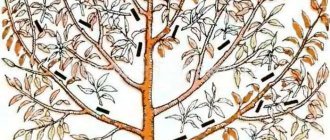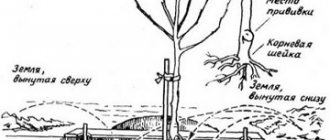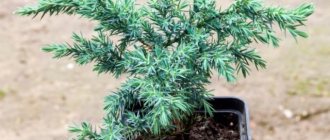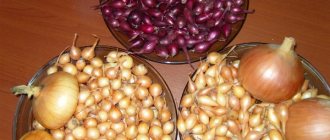To restore the fertility of your land there is no better way than green manure, scientifically called simply green manure. Interestingly, this word is translated from Latin as “a star receiving power from the sky.” Vegetables grown on green manure have high taste. Within the framework of this article, the best green manure for the garden for autumn planting will also be considered. Under the influence of green manure, the biological activity of the soil increases several times, the so-called saprophytic microflora of the soil rapidly develops, which actively decomposes plant residues, releasing oxides of nitrogen, phosphorus, potassium, calcium and other nutrients into the soil.
In addition, the saprophytic microflora of the soil is an antagonist of the fungal microflora of the soil, among which there are many pathogens of plant diseases. Such as root rot of grain crops, late blight of potatoes, tomatoes, fusarium of cucumber and zucchini and many others.
The gardening season is coming to an end. The earth is gradually freed from plants, giving all its strength to the current harvest. To increase soil fertility for the next season, sow green manure in the resulting areas.
Most often, legumes, cereals or cruciferous plants are used as green manure.
They must have time to sprout and grow before frost. Then they are either left in the beds under the snow, where they rot. Or they are embedded in the soil and we get an excellent natural fertilizer.
What green manures are best to sow in the fall?
The most common option for planting green manure in the fall is rye or mustard. Sow as soon as the land is free. These plants sprout very quickly. The mustard is left on the surface, and it goes green under the snow. And it is best to cut the rye, but not remove it, but leave it as mulch. Let's look at the most popular plants in each group of green manure.
Legumes
This group includes clover, alfalfa, lentils, soybeans, peas, chickpeas, and lupine. The most popular is, of course, lupine. Thanks to it, the soil is enriched with nitrogen.
Article on the topic: What else is lupine useful for in the garden?
Nitrogen is especially deficient in sandy and other soils with low organic matter. Approximately half of the accumulated nitrogen in the soil is used to form this year’s crop, and the soil will leave the remaining nitrogen in reserve. Such nitrogen will work much longer and more efficiently than ready-made mineral fertilizers.
After lupine, you can plant any plants. To improve the soil, lupine can be sown both before winter and in spring.
Cruciferous
These are mustard, rapeseed, rapeseed, and oilseed radish. The most commonly sown cruciferous crop is mustard. It is capable of transforming difficult-to-digest microelements into easily accessible ones. Mustard seeds are also inexpensive compared to other green manure seeds. In addition, mustard has phytosanitary properties on the soil.
Buckwheat
Buckwheat grows quickly and has a powerful root system, which sometimes develops up to one and a half meters. This promotes deep loosening of the soil, and rotted buckwheat enriches the soil with potassium, phosphorus and useful organic components.
Hydrophiles
A prominent representative is phacelia. The undeniable advantage of phacelia is its rapid growth and ability to rapidly gain green mass. Any soil is suitable for this plant; the plant is cold-resistant and does not depend on bright lighting.
phacelia
Cereals
We choose between wheat, oats, rye and barley. Rye is the most popular for planting before winter.
Cereal plants have a widely branched root system that breaks the soil into small lumps. This property of cereals is especially useful on heavy compacted soils into which water does not penetrate well.
At a depth of 10 centimeters, cereals literally form felt in the soil from many roots and due to this, the soil is enriched with root remains. Fungi settle in the roots of cereals and suppress pathogenic microflora.
Article on the topic : Oats as green manure in the garden
Features of soil application
The local climate determines the sowing time for white mustard. I do this in the fall, and in August - September. Sowing is carried out in the cleared area where potatoes, cereals, and strawberries grew. Mustard has enough time to grow green. For example, on one hundred square meters of land, after harvesting, about 400 kg of plant fertilizer will grow.
The stems of young mustard should not be mowed when frost arrives; they will fall to the ground on their own. This way they will retain moisture and prevent them from freezing. With the onset of spring, the fates with mustard are dug up. In the fall, green manure is sown for spring germination; this procedure must be carried out on loosened soil. To protect against washing out during spring floods, deep embedding is carried out.
We recommend reading: Selection
After sowing, sprouts appear on the fourth day. After 30 days they will reach 15 centimeters. To ensure good growth, it is necessary to water the plants. Small shoots are mowed down because they quickly harden and become a problem with shredding. At this time, the plant may lose its value due to the appearance of flower stalks. Once the seeds appear, mustard can multiply and become a nuisance weed that is difficult to remove.
The best time to dig up mustard is before flowering. Only at this moment is it full of nutrients that the soil needs so much for restoration and fertility. Using this method, the yield increases several times.
Mustard is the most effective annual green manure of the cruciferous family. Mustard is usually sown in the spring, when there is a month or a month and a half left before planting late vegetables or potatoes. Mustard can also be planted in the fall, when the harvest ends (but preferably before mid-September).
Experts advise not to dig up mustard, because after frost the mustard will subside and the soil itself will process the mustard by spring. Dying mustard roots will add structure and softness to the soil. Therefore, according to experts, it is better to leave mustard until spring. When spring comes, you just need to walk with a rake and that will be enough.
What green manure to sow before winter.
The most valuable crop among cereals is rye; it can be sown in the winter from August 25 to September 10. Before the onset of cold weather, the rye must establish a tillering node in order to continue development in the spring.
Rye is a very good green manure, but it is very allelopathic. That is, it completely displaces another culture. Even after mowing the rye, the roots remaining in the soil can suppress the growth and germination of seeds of other plants for up to 3 weeks. This must be remembered and the rye must be mowed 3 weeks before the expected date of planting garden plants.
Rye will rid your area of weeds, including wheatgrass. Wireworms really don't like rye.
Winter rye reliably covers the soil in the beds until spring, protecting it from weathering and drying out. Rye loosens the beds very well.
Green manure can bring tangible benefits.
Green manures, with their roots, transfer nutrients from the depths of the soil to its surface and, through root juices, transform them into a well-digestible state. Compounds of phosphorus, silicon and potassium that are previously insoluble and therefore not at all assimilated by plants.
Nitrogen-fixing bacteria that multiply on the roots of legume green manures enrich the soil with nitrogen compounds. And also capable of:
- improve the structure of the soil, make it looser and more moisture-absorbing;
- enrich the soil with substances such as phosphorus, potassium, nitrogen, calcium;
- strengthen the soil surface and shade it, which helps prevent overheating and erosion;
- slow down the growth of weeds due to strong roots that draw out nutrients;
- prevent pests from targeting the main crop;
- attract beneficial insects during flowering.
One of the main signs of depleted, unhealthy soil is the crust that appears on the surface after moisture. You can use chemical fertilizers to improve the situation.
But these additives have a bad effect on the natural inhabitants of the earth: worms and various microorganisms. Therefore, using organics is much more correct.
In addition to the above, green manure is also significantly ahead of manure in terms of the amount of useful elements, and can also reduce the acidity of the soil. Which will also have a beneficial effect on the cultivation of most garden crops. This is especially true for clay soils.
You can check the acidity of the soil using litmus paper. Take a handful of soil, put it in a glass of water, stir well and leave for at least a day. Now all that remains is to carefully pour the water into a clean bowl and dip the litmus into it. The paper turned red - make no mistake, the plant problems arose from increased acidity. A small change, or none at all - everything is fine with the site, the soil is neutral.
Methods for soil deoxidation using organic calcium fertilizers.
Step-by-step instructions for digging mustard
If you still decide to dig up mustard, then you should follow some rules that will help you:
- You need to choose the time of year. Typically, experts and experienced gardeners advise choosing late summer or early autumn, because during the winter mustard must absorb into the soil all the useful particles and elements it possesses.
- It is necessary to wait until the mustard blooms (about a month after the mustard has sprouted, maybe a little later, but no later than 2 months). At the beginning of flowering, mustard has the greatest amount of nutrients that are necessary for the soil.
- Next, you'll need a shovel. With its help, you must dig up the mustard using a special method called coma turnover. This digging of the soil is of great importance for restoring the structure of the soil; it is this method that allows you to introduce mineral and organic elements into the soil.
- All greenery that remains after this should be buried in the ground, because worms very quickly process grass and any other greenery.
- If you don't want to bother burying your greens, you can simply leave them in the garden bed. The roots will decompose over the winter and the above-ground part itself will rot.
The main rule for sowing green manure.
Green manure cannot be planted before or after related garden crops.
- lupine and vetch should not be planted before beans, peas and beans;
- We do not sow mustard, rapeseed, Shrovetide radishes before or after cabbage, radishes;
- Winter rye and other grains cannot be used before or after planting corn.
Now the most important thing is to know what kind of green manure to sow in the fall, you need to know what vegetable crops you will have growing in this area in the spring.
Before planting a cucumber, it is better to sow legumes, phacelia, and spinach. Good precursors to cabbage are oats, phacelia and legumes. Before the tomato , be sure to sow phacelia, mustard, rapeseed, rye or spinach.
If you are going to grow beets , the predecessors will be phacelia, vetch, oats and annual lupine.
Before potatoes we sow phacelia, vetch, oats, annual lupine, white mustard, oilseed radish and winter rye.
It is estimated that even in the non-chernozem zone, green manure gives an increase in potato yield of 50 kg per hundred square meters.
Summarizing the above, green manure can be divided into groups according to the functions they perform :
- accumulation of nitrogen from the atmosphere – legumes;
- transfer of phosphates into digestible forms - legumes, mustard and buckwheat;
- absorption of nitrogen from the soil, protection against leaching of nutrients from the subsoil - cruciferous, cereals;
- deep loosening of the soil - mustard, radish, lupine, sainfoin, buckwheat;
- protection against nematodes – legumes, sunflower, phacelia, ryegrass, cereals.
More details about which green manures to sow under which crops can be found in the green manure section.
Rye is a favorite and widespread crop
The crop is a cereal, annual, with enormous potential and speed of green growth. Capable of enriching soils with nitrogen and potassium. All the qualities necessary for green manure are embodied in this culture:
- frost-resistant;
- drought-resistant;
- undemanding to soils (saline and acidic - everything is acceptable);
- unpretentious to watering;
- excellent for developing new areas.
Considering the disadvantages of rye as a green manure, it should be noted that for a small garden, where all work is done manually, rye rhizomes become an insurmountable obstacle.
Rye seeds are rationed at the rate of 20-30 g per square meter of sown area.
The optimal height for mowing is 25-30 cm. Every centimeter above this level increases the percentage of cellulose, which in turn prevents the rapid absorption of organic matter by the soil.











